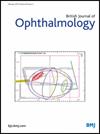Current status of school vision screening-rationale, models, impact and challenges: a review.
IF 3.5
2区 医学
Q1 OPHTHALMOLOGY
引用次数: 0
Abstract
Uncorrected refractive error is the leading cause of vision impairment in children globally, and studies have demonstrated that spectacle correction addresses the large majority of childhood vision impairment. Furthermore, trial evidence illustrates the beneficial impact of spectacles on learning, with effect sizes exceeding that of other school health interventions. While it is established that good vision is important for learning and optimising childhood development and quality of life, many countries lack healthcare systems that provide vision screening or universal access to eyecare for all citizens. This review examined school vision screening across several regions/countries, focusing on conditions that should be targeted and the corresponding interventions. The range of international models, the status of global refractive service coverage and measures needed for improvement are discussed. Vision screening protocols need to effectively detect vision impairment, seamlessly connect with intervention services to deliver spectacles and signpost for future access to eyecare. Conditions which may not be treatable with spectacles alone, including amblyopia, strabismus and other ocular diseases, also warrant signposting for treatment. The vision community must unite to urge governments to invest in building service capacity; allocating the necessary resources and effectively developing public health systems to support vision screening and access to eyecare. Schools play a crucial role in enabling population-based vision screening and need to be supported with eyecare interventions and resources. This will ensure optimised approaches to correct avoidable vision loss and provide children with the educational and health outcomes they deserve.学校视力筛查的现状——理论基础、模式、影响与挑战综述。
未矫正的屈光不正是全球儿童视力损害的主要原因,研究表明,眼镜矫正解决了绝大多数儿童视力障碍。此外,试验证据表明,眼镜对学习的有益影响超过了其他学校卫生干预措施。虽然良好的视力对于学习和优化儿童发展和生活质量非常重要,但许多国家缺乏为所有公民提供视力筛查或普遍获得眼科保健的卫生保健系统。本综述审查了几个地区/国家的学校视力筛查,重点关注应针对的条件和相应的干预措施。讨论了国际模式的范围、全球屈光服务覆盖的现状和需要改进的措施。视力筛查协议需要有效地检测视力障碍,与干预服务无缝连接,以提供眼镜和路标,以便将来获得眼科保健。仅凭眼镜无法治疗的病症,包括弱视、斜视和其他眼部疾病,也需要标示以进行治疗。愿景界必须团结起来,敦促各国政府投资建设服务能力;分配必要的资源并有效发展公共卫生系统,以支持视力筛查和获得眼科保健。学校在实现以人群为基础的视力筛查方面发挥着至关重要的作用,需要得到眼保健干预措施和资源的支持。这将确保采用最佳方法矫正可避免的视力丧失,并为儿童提供他们应得的教育和健康成果。
本文章由计算机程序翻译,如有差异,请以英文原文为准。
求助全文
约1分钟内获得全文
求助全文
来源期刊
CiteScore
10.30
自引率
2.40%
发文量
213
审稿时长
3-6 weeks
期刊介绍:
The British Journal of Ophthalmology (BJO) is an international peer-reviewed journal for ophthalmologists and visual science specialists. BJO publishes clinical investigations, clinical observations, and clinically relevant laboratory investigations related to ophthalmology. It also provides major reviews and also publishes manuscripts covering regional issues in a global context.

 求助内容:
求助内容: 应助结果提醒方式:
应助结果提醒方式:


